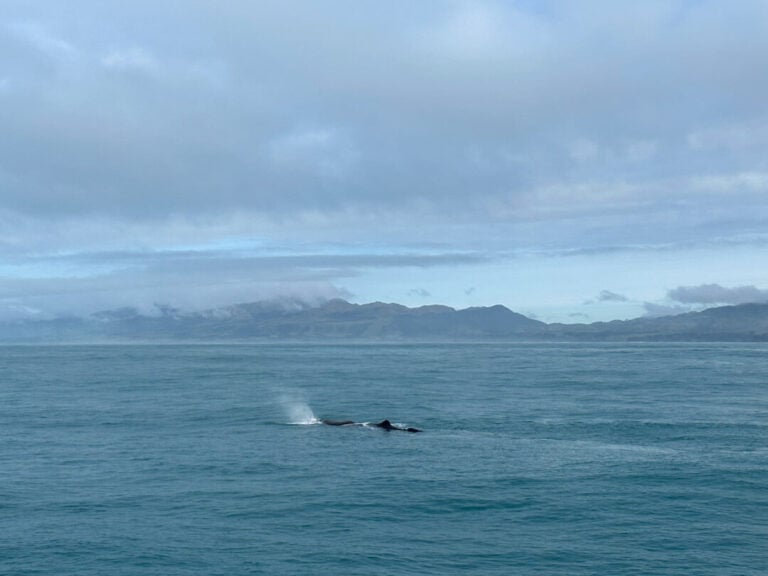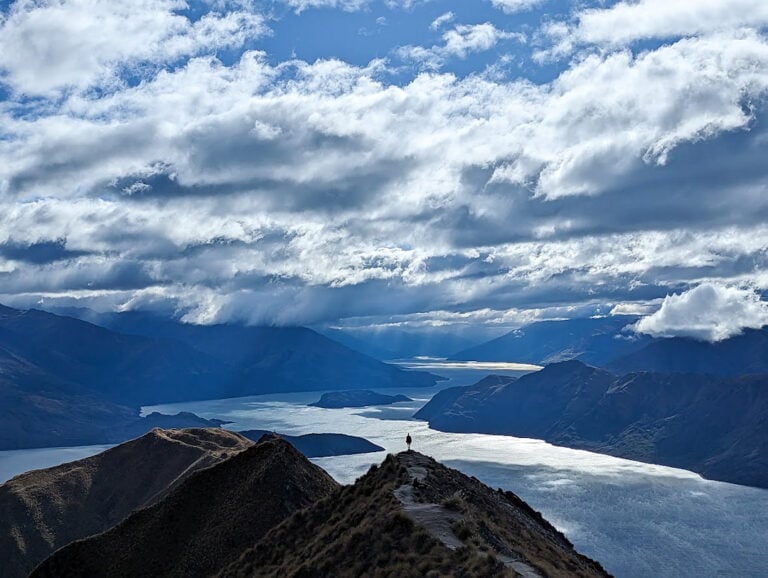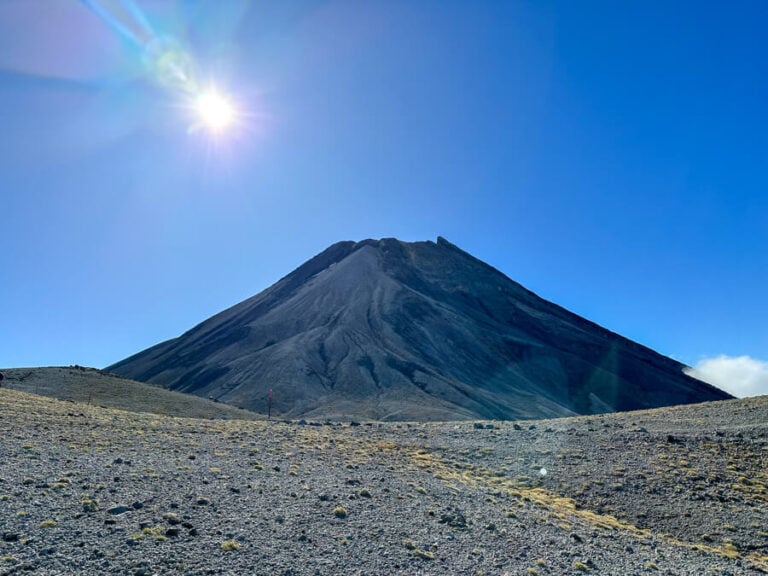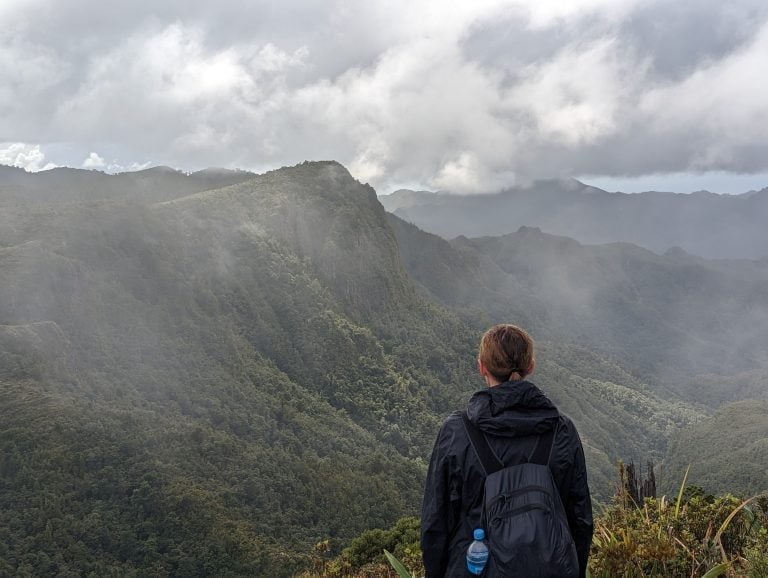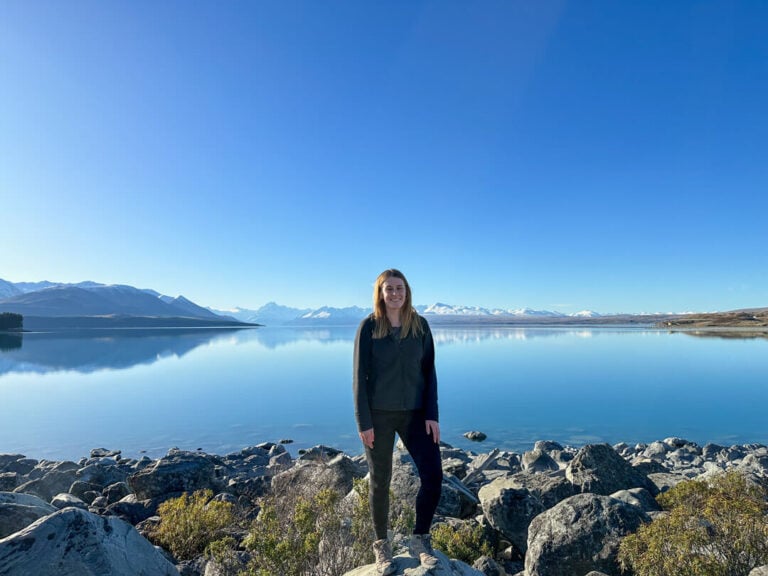Renting a Campervan in New Zealand | 13 Things to Consider

Renting a campervan in New Zealand is a popular way to explore this wonderful country.
Hiring a motorhome or camper gives you the freedom and flexibility to explore New Zealand on your terms and at your own pace. There’s nothing better than having the open road ahead of you and everything you need right there in your van.
I spent two months driving a campervan in New Zealand, and it was truly the trip of a lifetime! I got to explore the country exactly how I wanted to and could change my plans at the last minute.
However, planning your road trip through New Zealand takes some planning. It’s not always as simple as rocking up at the last minute and hiring the first campervan you find.
In this post, I’ll share everything you need to consider when renting a campervan in New Zealand. This includes the time of year, how to pick your campervan, additional costs and the options for freedom camping in New Zealand.
What to consider when renting a camper in New Zealand
The time of year and the weather
Considering the time of year to hire a camper in New Zealand is very important, as it can significantly impact your trip.
In the summer, you’ll face busier roads, packed campgrounds, and those dreaded sandflies.
In the winter, there is the potential for freezing nights, icy road conditions, and closed roads due to snow.
So, when is the best time of year to hire a campervan in New Zealand? Personally, I think the shoulder seasons of Spring or Autumn are fantastic options.
In April and May, the tourists depart ahead of the winter, but the conditions still tend to be favourable for camping (although expect some cold nights). In September and October, the snow starts to melt, and the temperature starts to rise.
Of course, the weather is very unpredictable in New Zealand, but I believe Spring and Autumn are a great time of year for a road trip.
I did most of my road trip through New Zealand in the winter, which was incredibly beautiful. However, it won’t be for everyone. The driving conditions on the South Island can be challenging, and the nights can be absolutely freezing. I woke up one night to find a loaf of bread had completely frozen inside the van.
Before booking your campervan, make sure you’ve checked the weather for the time of year you’re planning to go and that it fits with your preferences.

Book your campervan hire in advance
I’ve worked extensively in the tourism industry in New Zealand, and I’m still surprised when people turn up wanting to hire a van but haven’t booked anything.
Tourism in New Zealand has boomed in recent years, and renting a motorhome or van is one of the most popular ways to explore the country. If you plan to visit in the peak tourist season (between November and April), ensure you book well ahead of time.
For example, I’m writing this post in April – most campervans for the upcoming summer season (December/January) have already sold out.
Unfortunately, this catches many people off guard, especially backpackers or solo travellers who tend to plan more last minute.
I’d suggest looking at van availability before booking your flights so you can make sure it all fits.
The best campervan to hire
Choosing which campervan to hire is a big decision. There are many options, and it can be a bit of a headache trying to narrow it down.
Size
Campervans come in all different shapes and sizes.
From the small, budget vans of Mad Campers to the giant motorhomes of Maui and Britz, there are so many different options.
Here are a few things to consider when choosing the size of your van:
- What are you comfortable driving?
- How many of you will there be?
- How much storage space do you need?
- Would you prefer a fixed or convertible bed?
- Do you want to be able to stand up inside the van?
- Do you want a fixed kitchen?
For example, smaller vans may require you to open the back to cook, whereas a larger van may have a fixed kitchen inside.
Facilities
Take some time to think about what you need facility-wise. Are you okay with a portable toilet, or do you need a fixed toilet with a shower? How about the fridge? Some campervans offer a small chilly bin, whereas others have a full fridge and freezer.
Heating is another big factor, especially if travelling in the colder months.
If your van doesn’t have a heater which can be used overnight, will you get too cold on the trip?
Budget
This is probably the biggest thing to consider when hiring a campervan in New Zealand. You might feel confident enough to drive a giant motorhome, but they’ll cost you much more.
If you’re looking for budget campervans in New Zealand, consider companies like Mad Campers, Escape Rentals, and Wendekreisen.
I’ve hired a van from Wendekreisen twice now, including my two-month road trip, and I highly recommend them. I also had an excellent experience with Mad Campers.
Yes, the vans are much smaller and not always as well-maintained, but they do the job, and you’ll have more money to spend on experiences.
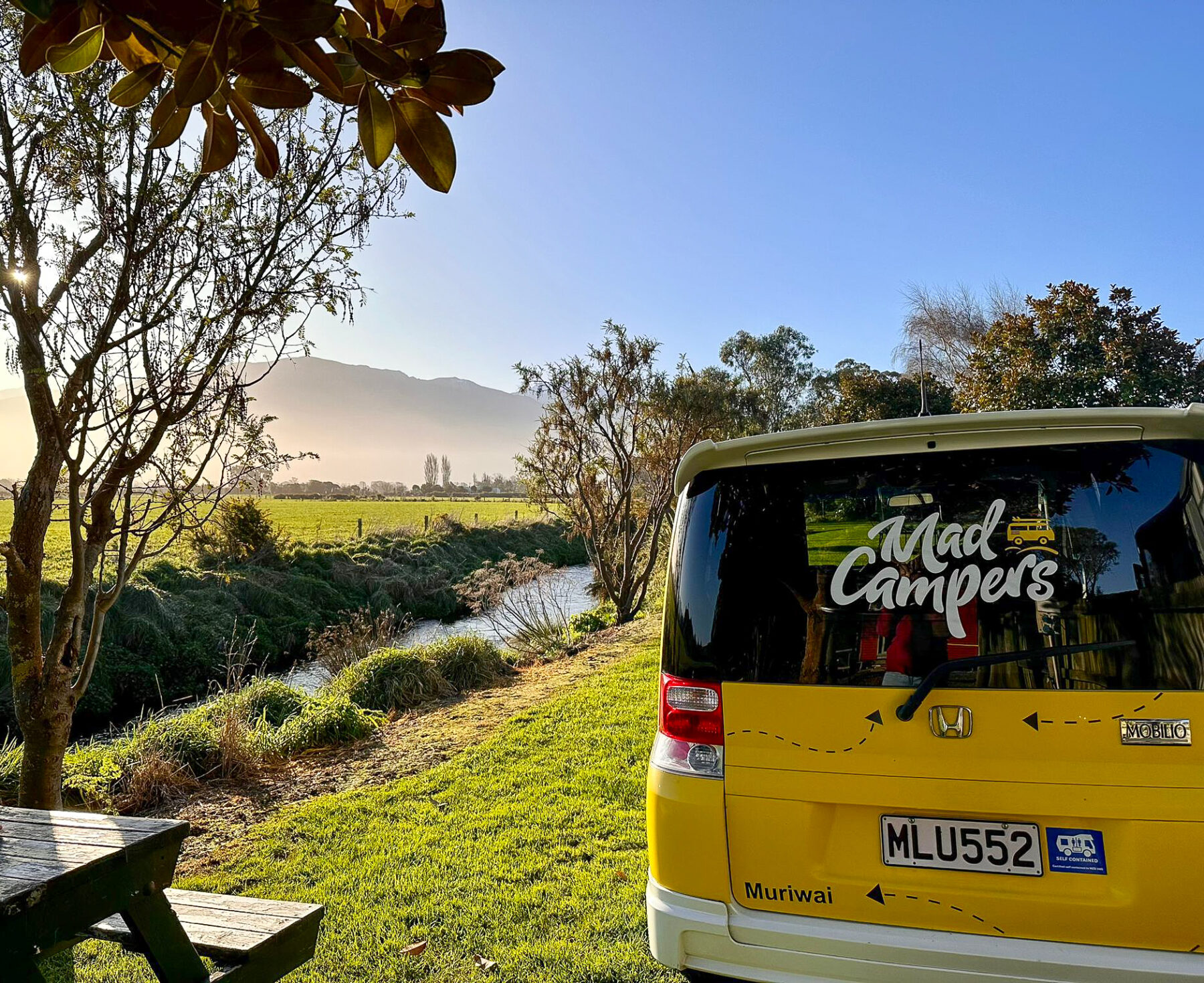
Don’t forget additional costs
Hiring a campervan in New Zealand isn’t as cheap as many people believe. There are many additional costs to consider, including:
- The cost of fuel
- The cost of the ferry
- Insurance cost
- Additional driver fee
- Campsite fees (even for self-contained)
The most significant expense that caught me off guard was paying for campsites. I had assumed that this wouldn’t be an issue with a self-contained van and that there would always be freedom camping options.
However, this isn’t true, and many areas of New Zealand don’t have many freedom camping options. In some places, such as Queenstown, it’s forbidden altogether. This means you’ll be paying for campsites even with a self-contained van.
Should you get a self-contained van in New Zealand?
When hiring a campervan in New Zealand, you have two main options: self-contained or not self-contained.
Put simply, a self-contained van includes a fixed toilet, a freshwater supply, and a wastewater container. A non-self-contained van is often very basic and might not even include a toilet.
If you want to freedom camp in New Zealand, you often need to have a self-contained campervan.
Non-self-contained vans are cheaper, but you generally won’t be able to freedom camp and will need to stay in holiday parks (there are a few freedom camping spots for non-self-contained, but not many).
For me, hiring a self-contained van was a no-brainer. While it was more expensive, it gave me so many more options for freedom camping and saved me money overall.
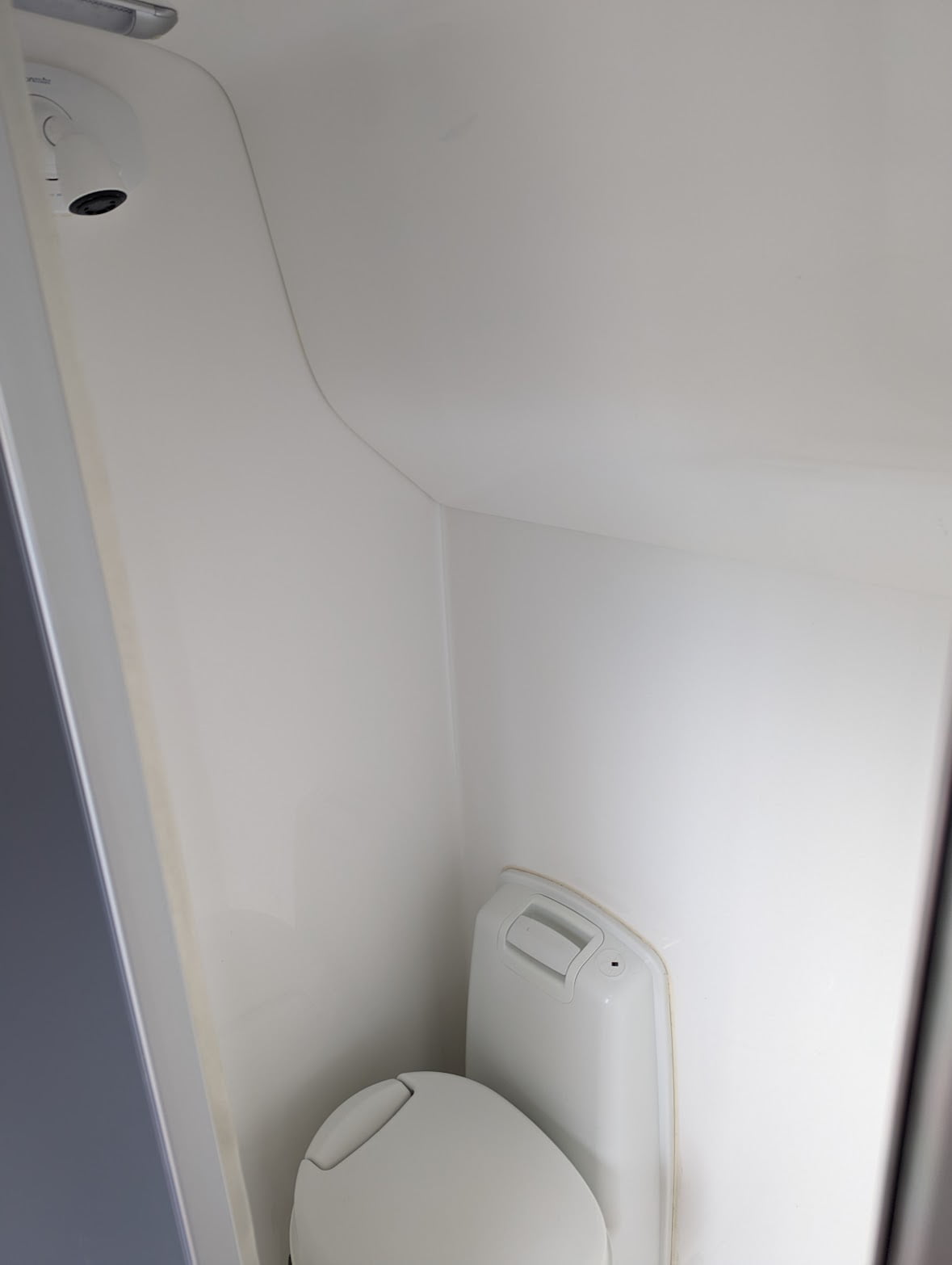
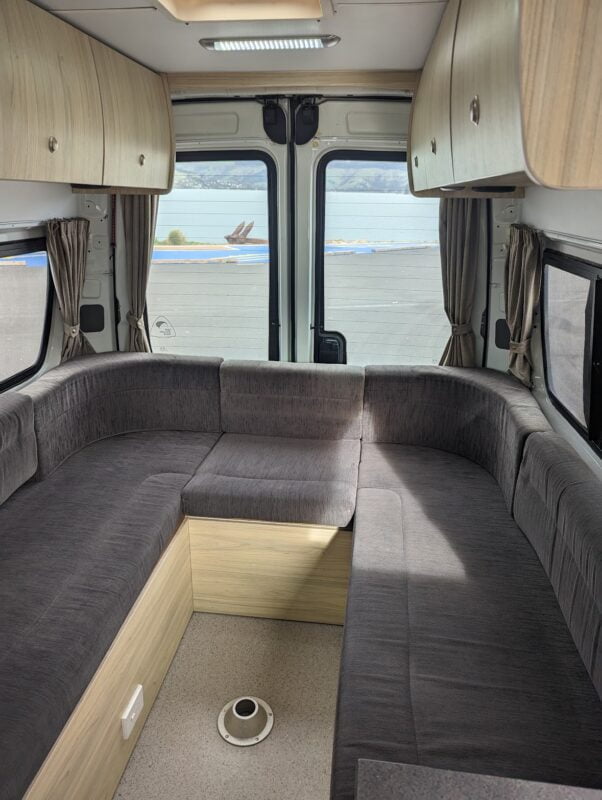
Freedom camping in New Zealand
I’ve already touched on this, but your camping options are important to consider before renting a campervan in New Zealand.
Unlike countries such as Norway, wild camping is illegal in New Zealand. This means you can’t just rock up anywhere and stay overnight. Councils are very strict about this in New Zealand, and you could face huge fines if you break the rules.
You can only freedom camp in designated zones or areas. Some areas of New Zealand are much more friendly to campervans than others.
Normally, freedom camping is free and there are options around both islands. However, some areas, such as Kaikoura and Queenstown, are incredibly strict, and you’ll need to stay in holiday parks.
When planning your trip to New Zealand, don’t assume you can park anywhere. You can use apps such as CamperMate to find freedom camping spots. However, these sites are very popular and in the summer months, often fill up by mid-afternoon.
Secondly, the freedom campsites are often very basic, sometimes without toilets.
When planning your New Zealand road trip, consider your different camping options and always have a backup. Even in the winter, I encountered some busy campsites, especially on the West Coast.
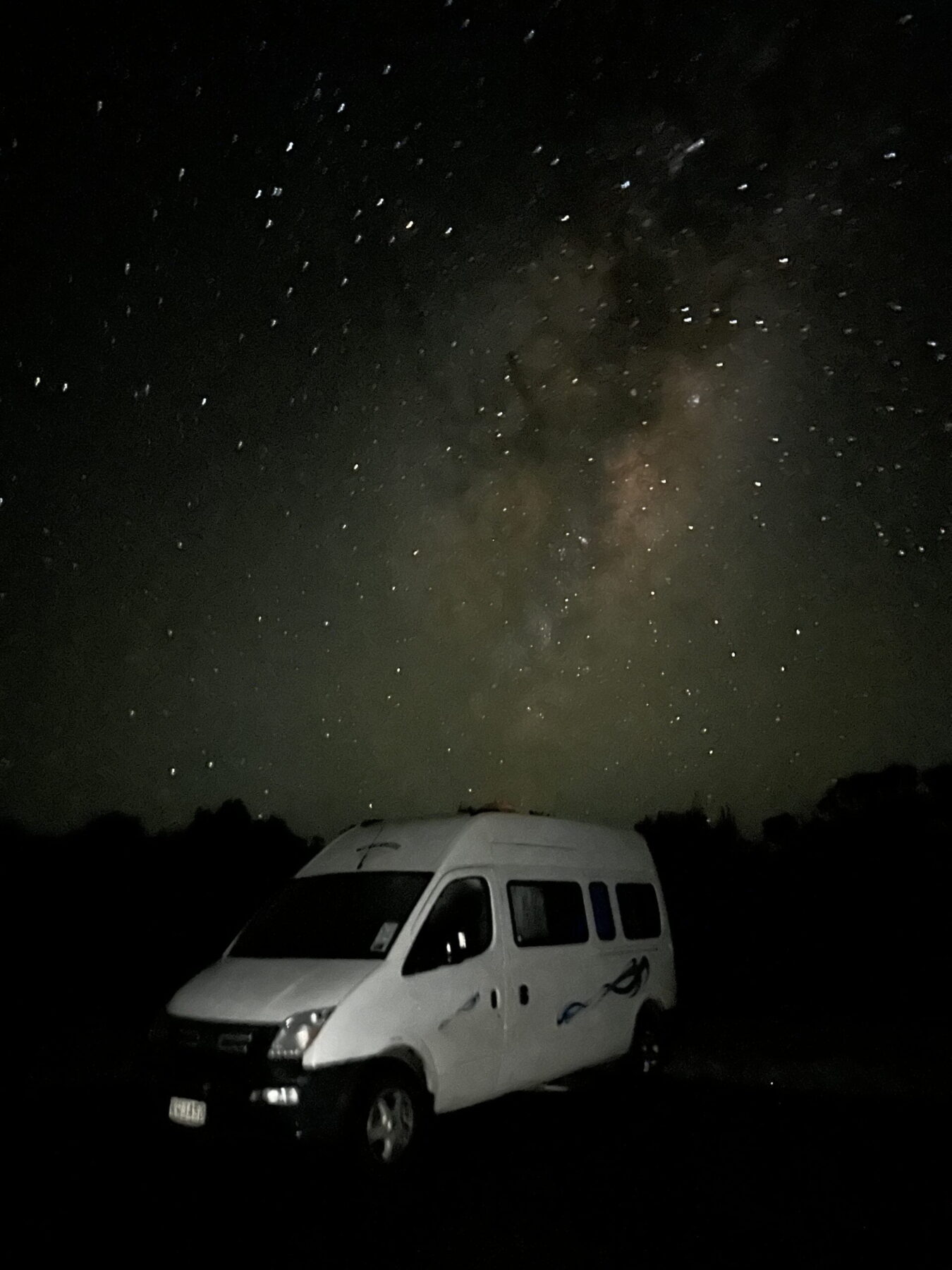
Driving in New Zealand
People often underestimate the driving in New Zealand.
While the roads are well maintained, they can be steep and windy, and you may face extreme weather. The drives between destinations can also be vast. For example, driving between Queenstown and Christchurch can easily take a full day, and that’s without any major stops.
Driving in New Zealand may also be very different from your home country. In New Zealand, drivers drive on the left-hand side of the road, which might be difficult for those who are used to driving on the right.
Having said that, I did find the roads in New Zealand much better than the UK. They are wide, well-maintained, and there are plenty of passing places to pull over.
When building your road trip itinerary, consider giving yourself extra time to get used to the driving conditions. I also suggest adding additional time to what Google Maps tells you.
The North Island or The South Island (or both)?
Ah, the big question. The North Island? The South Island? Or both.
This is a huge question and a difficult one to answer. Ultimately, it comes down to how much time you have. If you have ten days or less in New Zealand, I would personally stick with just one island.
Why? Well, New Zealand is a big country, and many of the attractions are spread out. If you try to cram in both islands in less than two weeks, you’ll be spending most of your time driving.
I’m working on a post now to compare the two islands, but here’s a quick summary.
The North Island is great for:
- Geothermal activities
- Some epic hiking (including the Tongariro Crossing)
- Beaches
- Warmer weather
- Maori experiences
The South Island is great for:
- Mountain landscapes
- More hiking opportunities
- Adventure activities
- The fantastic West Coast
- Milford Sound
I don’t think there is a correct answer when it comes down to choosing which one to explore, it’s entirely down to what you prefer.
For what it’s worth, I think the North Island is a bit more freedom-camping friendly, and it’s very underrated.
However, nothing beats the scenery of the Southern Alps and Fiordland National Park on the South Island.
To explore both at a reasonable pace, I would suggest giving yourself at least three weeks.
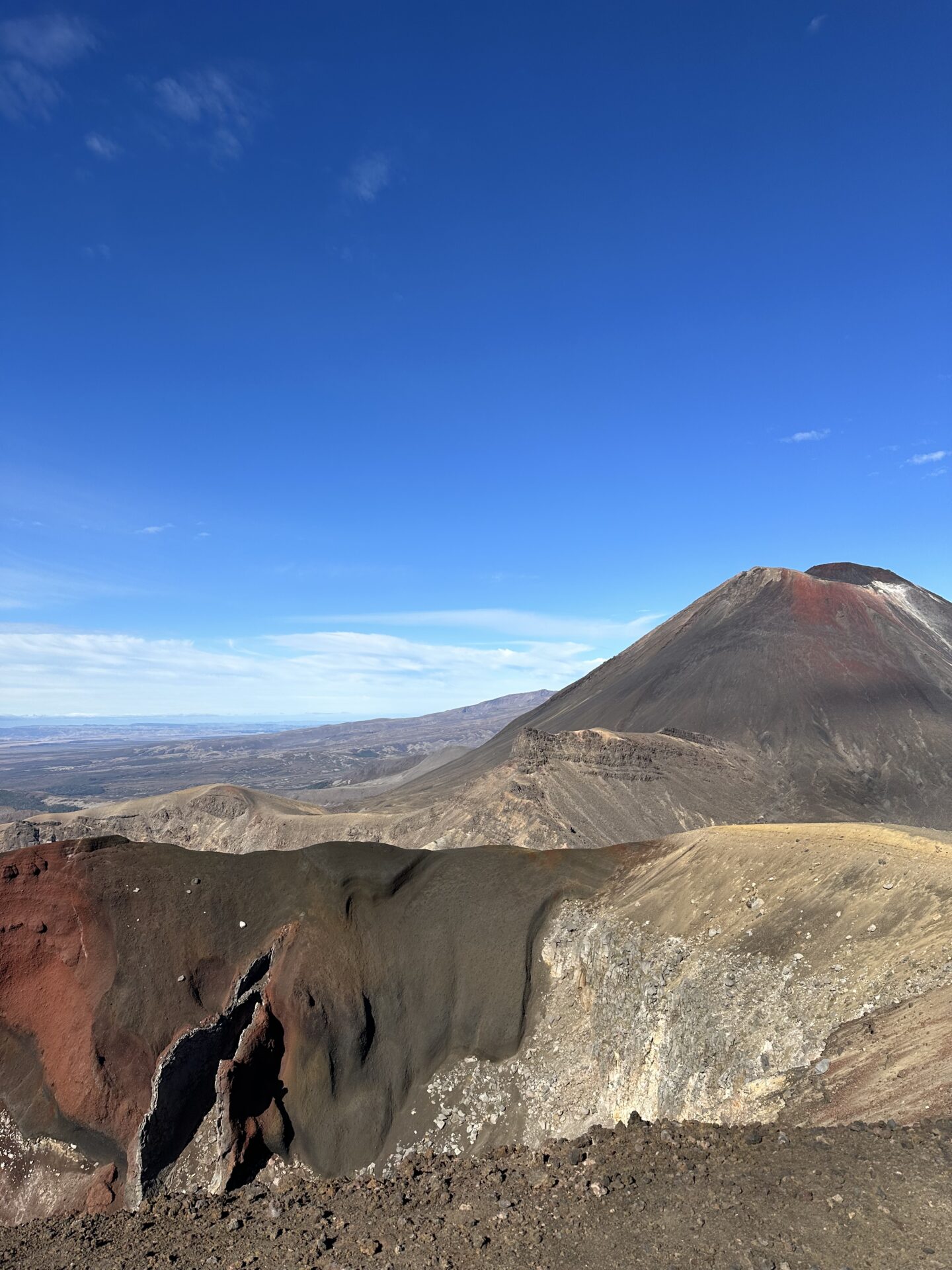
How long to spend in New Zealand
Once you’ve worked out where you’ll be going in New Zealand, you can finalise how long you want the campervan for. Companies tend to offer discounts on longer rentals, especially in the shoulder and winter seasons.
For the North Island, give yourself at least seven days in the van. This will give you time to see the main highlights. I spent three weeks on the North Island, and this was the perfect amount of time to see everything I wanted to see.
For the South Island, well… how long have you got? I spent almost two months in a van on the South Island and felt like I had barely scratched the surface.
However, I know most people won’t have nearly as much time as me. If you can, spend at least two weeks on the South Island.
Where to start and end your road trip
This might sound obvious, but choosing where to start and end your trip in New Zealand might be trickier than you think.
Many people opt to start and end their trip in Auckland. While this makes sense in principle, you’ll need to consider the cost of travelling back up to Auckland from the South Island (if you plan to visit both islands).
The ferry isn’t cheap, and you might find it’s easier and cheaper to drop your vehicle off at a different location. This does come with an additional fee, but it’s (usually) less than the ferry once you consider the fuel and driving time.
For people exploring both islands, starting in Auckland and ending in Christchurch tends to be the best option. Christchurch is the biggest city on the South Island, and it has a large international airport with many flights to several destinations in Australia and Asia. Most campervan rental companies also have offices there.
Queenstown is another option. However, there aren’t as many campervan companies in Queenstown. If you want to start or end your trip there, you’ll need to look at Jucy, Maui, or Britz.

Booking the ferry
If you choose to cover the North and South Islands with your van, you’ll need to take the ferry.
Firstly, ensure you can take your van on the ferry. Most rental companies in New Zealand are happy for you to do so, but a few don’t.
Secondly, be sure to book your ferry in advance. It can get incredibly busy, especially in the summer, and you don’t want to be stuck.
I booked my ferry two months in advance, and some dates were already full. It’s annoying as booking ahead takes away some of your flexibility, but you don’t want to get stuck and waste time.
Your rental company can often offer you a discount for the ferry if you book through them. Interislander and Bluebridge are the two options. I’ve travelled with both, and I don’t think there is much difference (Interislander had better chips in the cafe, though).
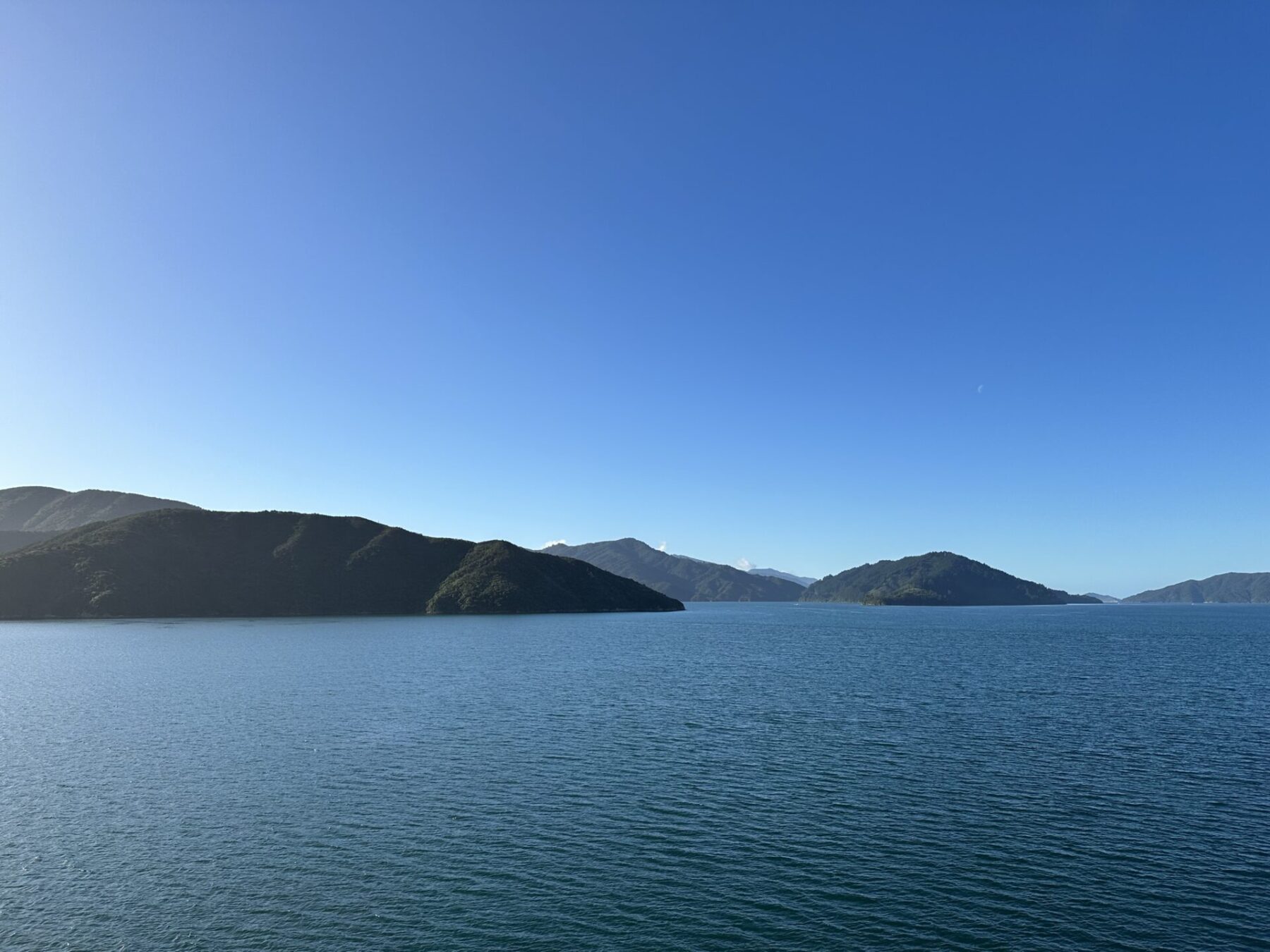
Don’t forget vehicle insurance
Most upfront quotes for campervans won’t include insurance; it’s usually an optional extra.
Personally, I think travelling with vehicle insurance is essential. If you crash or damage the vehicle and don’t have insurance, you’ll be left with high costs to repair the van. There are usually different levels of insurance to choose from, including basic and premium.
Basic insurance typically has a high excess and does not cover essentials like windscreen chips or tyre damage. On the other hand, premium insurance usually removes the excess and covers you for most eventualities (but double-check the fine print).
Every insurance policy is different, so it’s vital to read the policy document to understand exactly what you’re covered for and to choose the right option for you.
I always cover my vehicle directly with the rental company. It’s just not worth risking using a third party if something goes wrong.
In Iceland, I managed to get a chipped windscreen, which was only covered by premium insurance. Luckily, this is what I opted for. When I returned the car, the company didn’t even bat an eyelid and told me it was all covered. There was no paperwork or politics; I just handed over the keys and left.
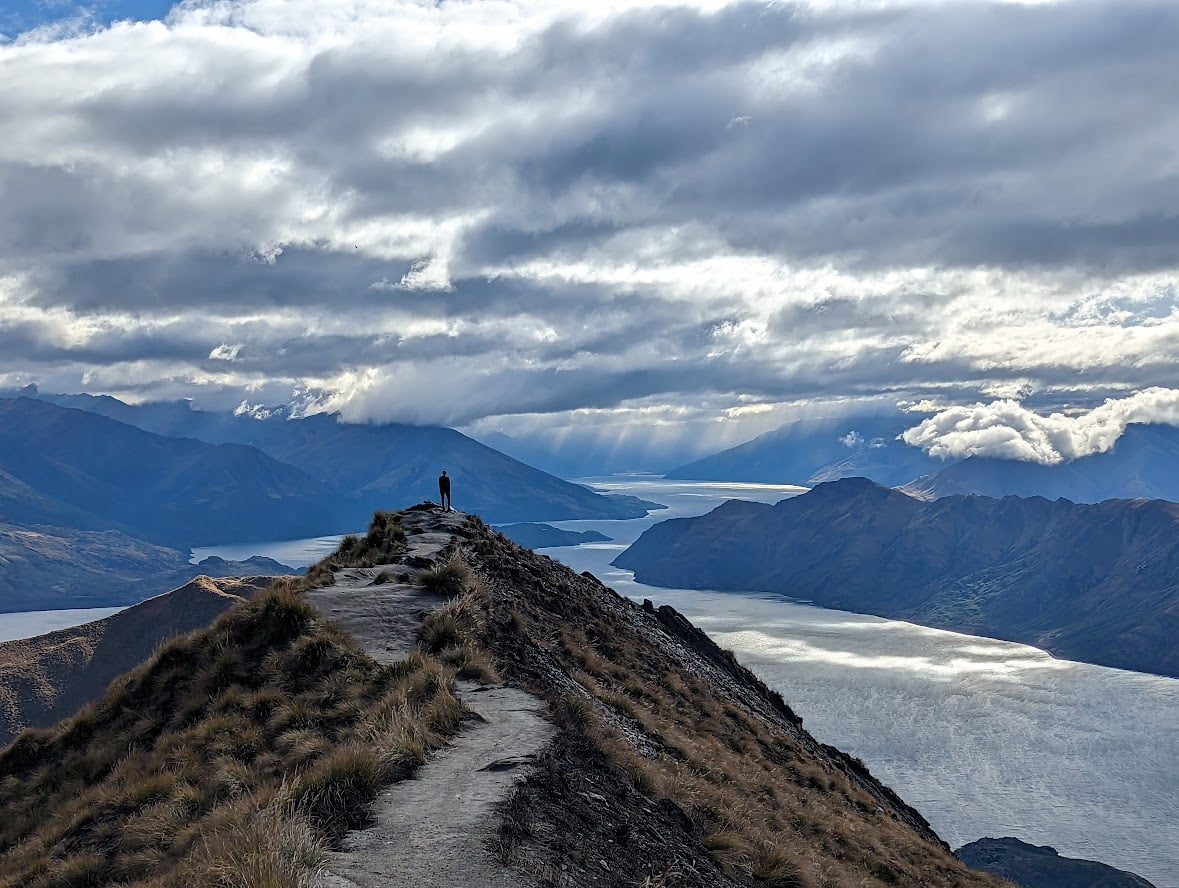
Be realistic
Try not to be over-ambitious with your New Zealand road trip itinerary.
I’ve helped many visitors plan their campervan trip through New Zealand. More often than not, people want to cram everything into a short period, and it’s just not doable.
Maps often underestimate driving times, especially when you want to stop and see the stunning scenery. For example, a five-hour drive is realistically going to be six or seven hours in a campervan, especially when driving through the mountains.
If you only have a short amount of time in New Zealand, prioritise what you want to see and go from there. Try to enjoy the things you have time to do, rather than trying to do everything and getting stressed when time starts to run out. No one visits New Zealand to spend their time sitting in a car.
If you’re looking for itinerary inspiration, consider a road trip between Queenstown and Milford Sound.
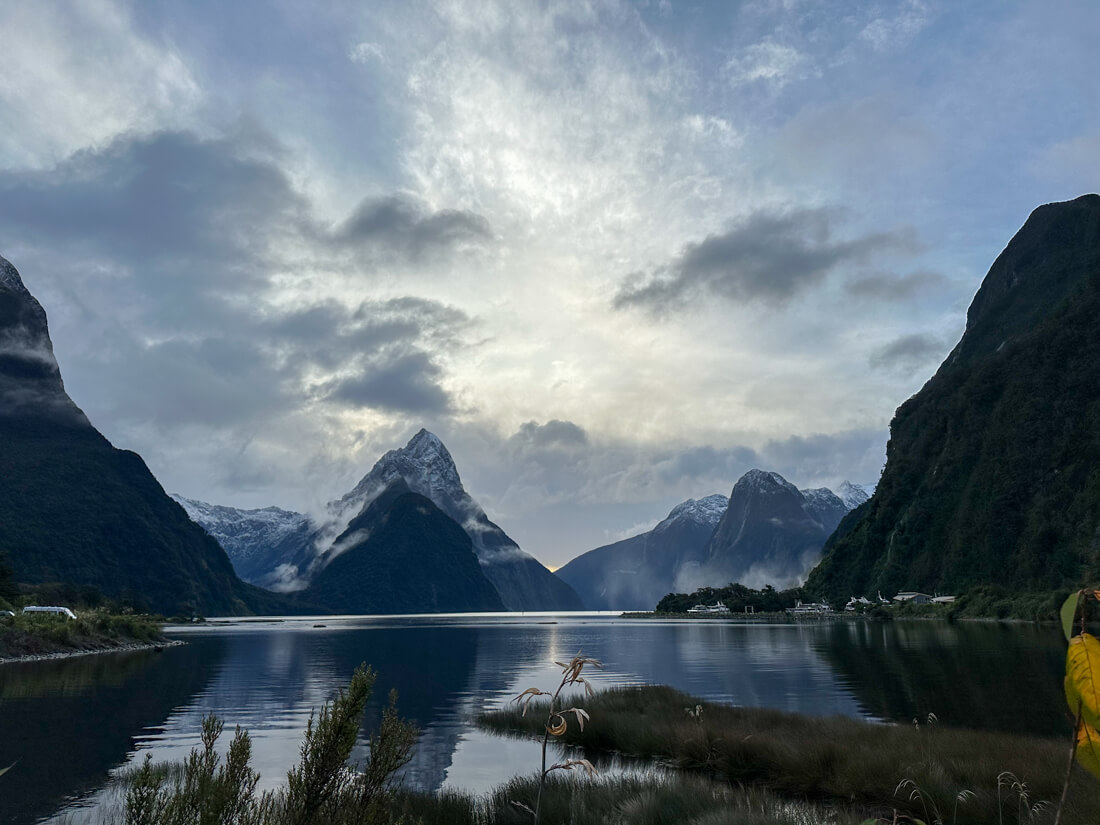
The best New Zealand campervan rental companies
There are countless options when it comes to deciding which campervan company to use in New Zealand. If you book well ahead of time, you’ll hopefully be able to find the perfect van. However, there are not always as many options with last-minute bookings.
Here are a few of my favourite campervan rentals in New Zealand.
The best overall campervan company in New Zealand: Wendekreisen
The best budget campervans in New Zealand: Escape Vans & Travellers Autobarn
The best campervan for solo travellers in New Zealand: Mad Campers
The best New Zealand motorhome company: Maui or Britz
The best for last-minute bookings: Jucy
Wendekreisen is my favourite campervan company in New Zealand. The vans are well-maintained, the staff are incredibly helpful, and the price is still very reasonable.
For solo travellers in New Zealand looking for a smaller van, consider the Mad Camper one-person van. I spent a week in this, and it was perfect for a shorter trip.
I hope you found this post useful. Save for later or share on social media.

